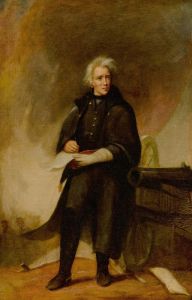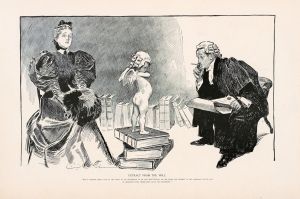
James Pollard Espy
A hand-painted replica of Thomas Sully’s masterpiece James Pollard Espy, meticulously crafted by professional artists to capture the true essence of the original. Each piece is created with museum-quality canvas and rare mineral pigments, carefully painted by experienced artists with delicate brushstrokes and rich, layered colors to perfectly recreate the texture of the original artwork. Unlike machine-printed reproductions, this hand-painted version brings the painting to life, infused with the artist’s emotions and skill in every stroke. Whether for personal collection or home decoration, it instantly elevates the artistic atmosphere of any space.
Thomas Sully, an American portrait painter, created the painting "James Pollard Espy" in the mid-19th century. This artwork is a portrait of James Pollard Espy, an influential American meteorologist known for his pioneering work in the field of weather prediction and atmospheric science. Espy, often referred to as the "Storm King," made significant contributions to the understanding of meteorological phenomena, particularly in the study of storms and atmospheric convection.
Thomas Sully was a prominent artist during his time, renowned for his portraits of notable figures in American society. Born in England in 1783, Sully moved to the United States with his family in 1792. He developed a successful career as a portraitist, capturing the likenesses of many distinguished individuals, including political leaders, socialites, and cultural figures. Sully's style is characterized by its elegance, attention to detail, and the ability to convey the personality and status of his subjects.
The portrait of James Pollard Espy by Sully is an example of the artist's skill in capturing the essence of his subject. In this painting, Espy is depicted with a thoughtful expression, reflecting his intellectual pursuits and contributions to science. The composition of the portrait is typical of Sully's work, with a focus on the subject's face and upper body, set against a neutral background that emphasizes the figure.
James Pollard Espy was born in 1785 in Pennsylvania and became one of the first American meteorologists. He is best known for his work on the theory of convection and his efforts to develop a systematic approach to weather forecasting. Espy's interest in meteorology began in his youth, and he pursued this passion throughout his life. He conducted numerous experiments and observations, which led to the publication of his influential work, "The Philosophy of Storms," in 1841. In this book, Espy presented his theories on the formation and behavior of storms, emphasizing the role of heat and moisture in atmospheric processes.
Espy's contributions to meteorology were recognized during his lifetime, and he held several prominent positions, including serving as the first official meteorologist for the United States government. His work laid the foundation for modern meteorological science and influenced subsequent generations of scientists in the field.
The portrait by Thomas Sully serves as a visual tribute to Espy's legacy and achievements. It captures not only the likeness of a significant figure in American science but also reflects the artistic style and cultural context of the period. Sully's ability to portray his subjects with dignity and insight makes this painting a valuable historical artifact, offering a glimpse into the lives of influential individuals in 19th-century America.
Overall, the painting "James Pollard Espy" by Thomas Sully is a testament to the intersection of art and science, commemorating the contributions of a pioneering meteorologist through the skillful work of a master portraitist.

















